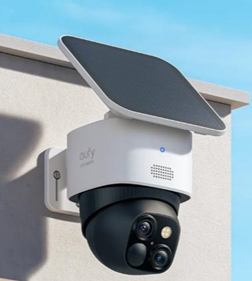Enlarge
Mark Walton
reader comments
49
with 40 posters participating
Share this story
Share on Facebook
Share on Twitter
Share on Reddit
Specs at a glance: Zotac Zbox EN1080 (barebones)
CPU
Intel Core i7-6700
GPU
Nvidia GTX 1080
Networking
Dual gigabit LAN, 802.11ac/b/g/n, Bluetooth 4.0
Ports
Microphone, headphone, 4x USB 3.0, 1x USB 3.1 Type-C, 1x USB 3.1 Type-A
RAM
2 x DDR4-1866/2133 SODIMM Slots (up to 32GB)
Storage
1x 2.5-inch SATA 6.0 Gbps HDD/SSD bay, 1x M.2 PCIe x4 slot (22/42,22/60,22/80)
Price
£2000
/
$2000
Size
225mm x 203mm x 128mm
Last year Zotac released its tiny, gaming-ready
Zbox EN1060
mini-PC. Featuring an Intel Core i5-6400T processor and
Nvidia GTX 1060
graphics card, the EN1060 is more than fast enough for high settings 1080p gaming at 60FPS or more. But for those that demand more frames, more resolution, and more powerful hardware inside a console-sized chassis—particularly as Sony raised the game somewhat with the
PlayStation 4 Pro
—Zotac has another option.
Enter the Zotac Zbox Magnus EN1080, a ventilated black cube that packs a fully watercooled Skylake
Intel Core i7-6700
processor (note the lack of the unlocked "K" designation) and
Nvidia GTX 1080
inside a case just 225mm wide and 203mm deep. Such powerful hardware means the EN1080 is capable of playing games at a native 4K resolution with near maximum settings at over 60FPS. Even better, thanks to the clever watercooling setup inside, it does so while remaining quieter than any console or desktop PC with a standard cooling setup. It's seriously impressive stuff.
Naturally, there's a price to pay for such a setup—and it's not cheap. A barebones EN1080—where you supply your own storage, memory, and operating system—costs around
£2,000

/
$2,000
. A more conventional desktop system with the same components plus storage, RAM, OS, and a decent all-on-one liquid cooler comes in at under £1,500.
Hey, good lookin'
Of course, that system wouldn't be anywhere near as small—even with a good mini-ITX case—nor would it be as quiet unless you invested in a watercooled graphics card, too, (graphics cards are often the noisiest component in a modern PC). Whether or not it would be more or less attractive is down to personal taste, of course, but I think Zotac has done a much better job with the EN1080 than the EN1060 and its predecessor, the GTX 980-powered EN980.
Advertisement
The squat square chassis is much taller than the EN1060 at 128mm, but the EN1080's overall size and footprint is still compact. The matte black front panel sports a large power button with customisable RGB lighting, an HDMI port for VR headsets, an SD card reader, USB 3.1 Type A and
Type C
ports, and a microphone and a headphone jack, which covers pretty much all the IO you need. The side panels have the same matte black finish but are additionally adorned with RGB-illuminated Zotac and 10th Anniversary logos. These are surprisingly (and thankfully) subtle for a gaming system, and, with the lighting disabled, are barely visible at all.
Final Fantasy
for scale.
The honeycomb venting gives the EN1080 a unique look.
Rear IO.
'Round back is a large vented section along with four USB 3.0 Type A ports, two DisplayPort 1.3 ports, two HDMI 2.0 ports (up to four displays can be connected at once), two gigabit Ethernet ports, and antenna sockets for the integrated 802.11ac/b/g/n Wi-Fi. There are also
two
DC input jacks for the pair of included 180W (19.5V @ 9.23A) power bricks. High-end small form factor gaming systems featuring two power bricks aren't uncommon—see the Asus ROG G20 or
Acer Predator 21X laptop
—particularly as OEM bricks top out at around 330W (
Eurocom
has a mammoth 780W model on the way, but it won't be cheap).
The EN1080's most striking feature is the honeycomb-style venting on top, through which the vast majority of heat is expelled from the system. It's a pleasing design touch that's unique without being overbearing.
A closer look inside
On the bottom of the EN1080 are four rubber feet, which can be unscrewed for access to upgradeable parts without the need to dig out a screwdriver. Inside are two DDR4 2133 SO-DIMM slots for up to 32GB of RAM, an
M.2 Type 2280 PCIe 3.0 x4 slot
for something like a
Samsung 960 Pro
, and space for a standard 2.5-inch hard drive or SSD. Those with larger storage needs may lament the single 2.5-inch drive bay, but the storage options work well for a gaming system using an M.2 drive for the OS and frequently accessed games, and a bigger 2.5-inch SSD for storage.
Advertisement
While the late Steve Jobs would never have approved of the visible screws along the EN1080's side panels, they do make it easier to get a look at the system beyond the user-upgradeable parts. Inside is an impressively compact setup, featuring two custom-made waterbocks for the socketed CPU and MXM-based GPU, which are connected to a sealed, single-loop watercooling setup. There's a separate pump mounted to the side of the chassis, which pumps water to a 120mm radiator that exhausts out of the honeycomb vents up top.
The bottom cover slides off to reveal upgradable components.
With the side panels off you can get a look at the cooling system.
On the left is the pump.
The custom made water blocks are big, particularly the one for the MXM graphics card.
The 120mm radiator.
A closer look at the pump.
It's a neat solution, but using just a single 120mm radiator to cool both a top-end CPU and GPU is a compromise that goes some way towards explaining why Zotac didn't include an overclockable "K" variant of the Core i7-6700 CPU, which is locked to a 4GHz boost clock; overclocking both a GPU and CPU would have pushed the cooling system too far.
This was borne out in testing. Running an AIDA 64 stress test on the CPU resulted in good temperatures of 63 degrees Celsius after an hour. However, with AIDA 64 and the Unigine Heaven GPU benchmark running simultaneously, CPU temperatures hit 94 degrees Celsius, resulting in the dreaded thermal throttling. GPU temperatures hit 83 degrees Celsius, but boost clock speeds were steady at around 1,800MHz.
To be clear: this is an extreme use case. When gaming, both CPU and GPU temperatures are reasonable, and there's no thermal throttling. The EN1080 is surprisingly quiet, too, with a dull, barely audible fan that's much quieter than the high-pitched whine of both the
PS4 Pro
and
Xbox One S
. What the extreme load test shows is that there isn't much room to push the system further; those hoping to eke a little more performance out of the GTX 1080 with some overclocking are out of luck.









